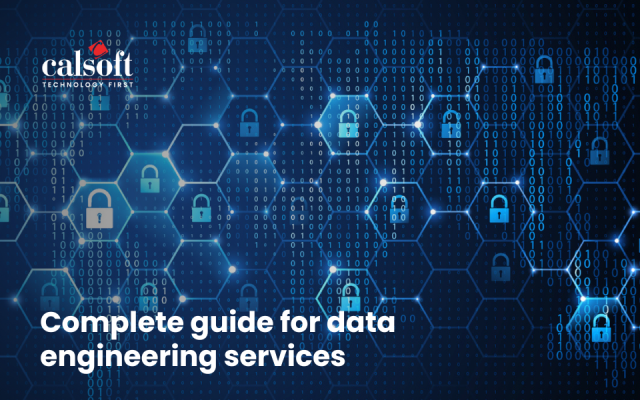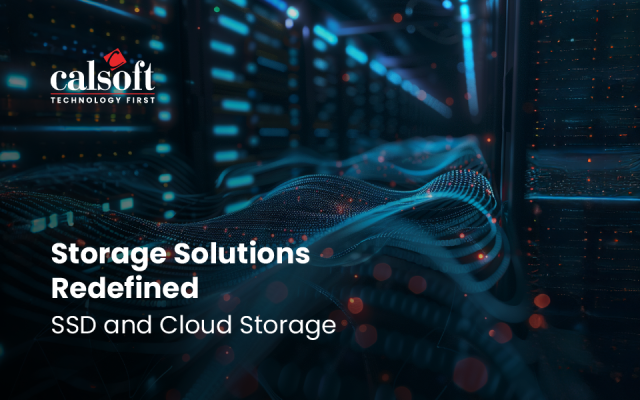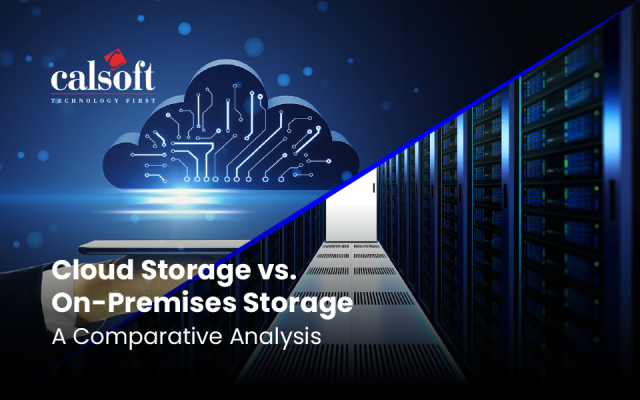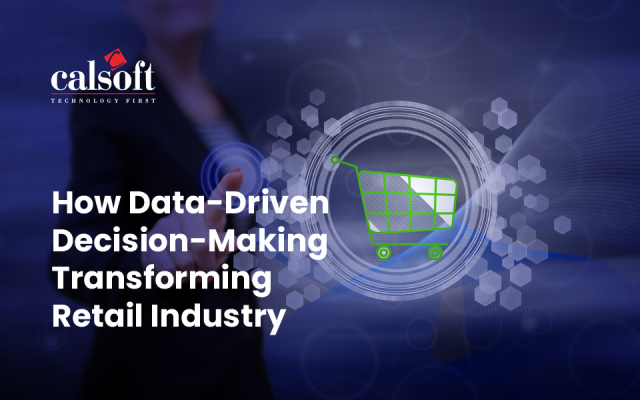In the current era of technology, data storage plays a vital role in every aspect of venture and personal life. The shift from physical to digital records requires upgraded data storage solutions. Comprehending numerous data storage technologies is necessary to ensure that your data remains attainable, secure, and effective. Let’s dive into the numerous types and trends of data storage technologies!
What is Data Storage?
When you think about data storage, you’re thinking about the very core of how modern technology operates. Data storage refers to the techniques and technologies you use to keep your data secure, attainable, and ready for use whenever you need it. It’s the backbone of everything from your mobile to enormous data centers running the internet.
At its core, data storage is about safeguarding digital data over time. You use data storage every day, whether you’re saving a document, uploading pictures, or backing up your files. It’s necessary because, without reliable data storage, significant data would be lost, from valuable memories to crucial business information. What if you cannot attain your bank records, lose all your vacation pictures, or your firm is facing downtime due to lost information? The capability to store and recover data effectively and safely is what makes our digital world viable.
Before knowing about the data storage technologies, let us understand the types of data or digital information that exists and the key challenges of traditional storage solutions.
Types of Digital Information
You deal with two types of digital information: input and output.
- Input data: This is the data provided to the devices. It indulges things such as typing a document, uploading pictures, or entering information into a spreadsheet. Every time you communicate with your PC, smartphone, or any digital device, you’re creating input data.
- Output Data: This is the data produced by the devices based on the input provided. It includes refined documents, edited pictures, or deliberated spreadsheet outcomes. Output information is critical because it depicts the end of the product communications with digital devices ready for you to use, share, or store.
Now that we’ve covered the types of digital information let’s dive into the limitations of traditional computer memory.
Limitations of Traditional Computer Memory
The traditional computer memory indicates Random Access Memory (RAM and Read-Only Memory (ROM). Both play critical roles but come with restrictions.
- RAM: It’s fast and used for temporary storage while the computer is on. Think of it as your computer’s short-term memory. However, when you turn off your device, you lose any information stored in RAM. This volatility means it’s not suitable for long-term storage.
- ROM: This type of memory is non-volatile, meaning it withholds information even when the device is powered off. It stores firmware and crucial system guidelines. But ROM is read-only, so you can’t easily alter, or data stored in it.
These restrictions emphasize why you need more powerful and adaptable data storage solutions, such as hard drives, Solid State Drives (SSDs), and cloud storage. These technologies permit you to store enormous amounts of information safely and attain it anytime, ensuring that your data is both secure and attainable.
But what if you need more robust solutions to store and access large volumes of data efficiently? Let delve into different forms of data storage.
Forms of Data Storage
Data storage technologies have come a long way, offering you numerous options to suit your requirements. Let’s learn about the predominant forms of data storage.
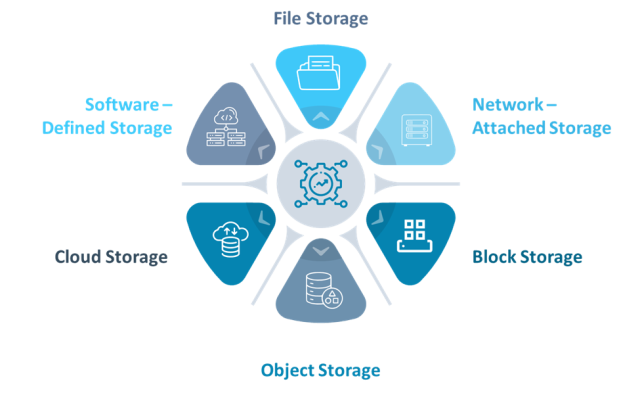
File Storage
Think of File Storage as a digital filing cabinet. Users can systematize the information in a hierarchical structure using directories and subdirectories. This technique operates best when you’re dealing with standardized data, like documents and spreadsheets. You can easily go through folders to discover what you need, just like reversing through a well-organized file system. It’s straightforward and user-friendly, making it an eminent choice for many organisations.
Block Storage
When you require speed and efficacy, Block Storage is your go-to. This technique stores data in blocks, which permits prompt and effective data transfer. It’s specifically suitable for a set of information and applications that need quick read/write speeds. Envision each block has a small repository unit that can be attained involuntarily, providing you with the adaptability and performance required for high-demand environments. Whether you are running a high-transaction application, block storage delivers the performance you need.
Object Storage
For managing enormous amounts of amorphous data, Object Storage is a groundbreaker. It’s designed for cloud-native applications and large-scale data storage requirements. Unlike file and block storage, object storage doesn’t use a hierarchical structure. Instead, it stores information as objects, each with its own unique identifier. This makes it amply ductile and perfect for storing multimedia files, backups, and other large datasets. If you’re operating on cloud-based projects or required to handle expansive data archives, object storage provides the adaptability and scalability needed.
Network-attached Storage (NAS)
Enter Network-attached Storage (NAS), your solution for shared data access. Think of NAS as a central hub where all your data is stored and can be attained by multiple users over a network. This is ideal for small ventures or home offices where partnership is key. For example, if you and your team are required to work on shared documents or media files, NAS ensures everyone stays on the same page. However, if you discover yourself in high-demand synopsis, like editing videos or running severe applications, NAS might scuffle to keep up with the load.
- Now, if you’re dealing with enormous amounts of information and need outstanding performance, Storage Area Network (SAN) is the way to go. SAN provides acutely high data transfer speeds, making it perfect for large transactional databases or virtualized environments. Picture a vibrant e-commerce site managing thousands of transactions per minute; SAN ensures everything runs smoothly. But, with great power comes intricacy and cost. Setting up and handling a SAN needs skills and investment, so it’s generally restrained for preponderant enterprises with significant data requirements.
- Direct-attached Storage (DAS) is like having a personal powerhouse. You link it rightly to your computer or server, giving you flickering-fast performance. With DAS, you can quickly attain and store your files without the lag. However, keep in mind that while DAS is marvelous for performance, it has its restrictions. It’s not the best for expandability or network attainability. If you need to share information across multiple devices, DAS might not be your go-to.
Cloud Storage
Take your information to the next level with cloud storage. This ductile, off-site storage solution is handled by top-notch providers such as Google Cloud and AWS. You will benefit from the adaptability to scale up or down as you need modifications, without the pester of handling physical hardware. Plus, with powerful security gauges in place, your information stays secure and attainable from anywhere in the universe.
One of the protruding ascents in the field of data storage technologies is Software-defined Storage (SDS). But what exactly is SDS, and how does it communicate with other innovative storage technologies?
Software Defined Storage
What if you can handle your storage resources without being bound to explicit hardware? That’s exactly what Software-defined Storage (SDS) provides. By severing storage resources from the fundamental hardware, SDS uses software, virtualization, and Application Programming Interfaces (APIs) to offer more adaptable and effective storage solutions. You get to control storage through software, making it easier to manage and distribute resources as required. This approach not only improves expandability but also upgrades your repository infrastructure, ensuring it meets your organization’s unfolding requirements.
- Storage virtualization takes the physical resources you have and pools them together, permitting unified supervision. Think of it as creating a virtual layer over your physical repository devices. This pooling procedure enables you to handle multiple repository devices as a single unit, streamlining administration and enhancing implementation. By consolidating the physical storage into a virtual pool, you can distribute resources more effectively and answer rapidly to altering storage requirements, improving overall functioning efficiency.
- When you incorporate SDS within Hyperconverged Infrastructure (HCI), you unleash a new level of adaptability and expandability. Hyperconverged storage amalgamates computing, storage, and networking into a single system, handled through software. This incorporation permits you to expand your infrastructure smoothly and manage resources from a consolidated interface. Hyperconverged Storage provides the dexterity to meet blooming data requirements, making it a perfect solution for ventures looking to sleek their functioning and enhance performance.
By clasping Software-designed Storage and related technologies such as storage virtualization and hyperconverged storage, enable enterprises to manage data more efficiently.
Selecting the right data storage solution is very significant for any enterprises. Let’s learn about the distinct types of data storage solutions attainable so that you can discover the best fit for your requirements. When it comes to handling data, you require the right tools to keep everything running effortlessly.
SSD and Flash Storage
What if you have your data which is promptly attainable without the delays of spinning disks? That’s the beauty of SSD (Solid-State Drives) and flash storage. These devices provide low dormancy and no moving parts, making them amply quick and dependable. Whether you’re running a high-traffic website or a data-intensive application, SSDs offer the pace you need to keep everything running effortlessly.
Hybrid Cloud Storage
Sometimes, a one-size-fits-all approach doesn’t cut it. That’s where hybrid cloud storage comes in. By amalgamating private and public clouds, you can store sensitive information in a safe, private environment while taking advantage of the expandability and cost savings of the public cloud for non-sensitive information. This blend ensures you get the best of both worlds, keeping your crucial data secure and your venture limber.
Backup Storage
Don’t let a data loss fatality catch you off guard. Backup storage solutions, indulging Backup as a Service (BaaS), provide dependable ways to safeguard your information. With BaaS, you get automated backups handled by specialists, ensuring that your data is always secure and retrievable. Whether it’s inadvertent deletion, hardware failure, or a cyber-attack, you will have peace of mind knowing that your data can be retrieved promptly.
Selecting the right data storage solutions is important for sleek functioning and safeguarding your valuable data. Whether you need the pace of SSDs, the cost-efficacy of hybrid storage, the adaptability of cloud storage, the ingenuity of hybrid cloud storage, or the security of backup cloud storage, there’s an option that fits your eccentric requirements.
The comprehension of these data storage technologies can help you select the best solution for your explicit requirements. Each of the data storage technologies provides eccentric advantages depending on your requirements. Whether you prioritize performance, shared access, or high-speed transactions, there’s a solution that fits.
But how do we ensure the security of all this valuable data?
Data Storage Security
Protecting your data against cyber threats is more crucial than ever. Cybersecurity is not just for tech giants; it’s for anyone who values their data. By assimilating the right data storage technologies, you can ensure your information remains safe and attainable only to sanctioned users.
To protect the information, it is necessary to enforce numerous security measures such as permissions, encryption, data masking, and amendment.
- Permissions: Grant explicit access levels to distinct users. By doing this, you control who can view, edit, or delete your data. This minimizes the threat of unauthorized access.
- Encryption: Encipher your information both in transit and at rest. Encryption converts your data into a coded format, which can only be decoded by someone who has the decryption key. This makes it very tough for hackers to attain your sensitive data.
- Data Masking: Use data masking methods to hide original information with altered content. This process helps safeguard sensitive data, especially in non-production environments where examining or expansion takes place.
- Redaction: Redact sensitive data to avert unauthorized users from seeing it. Redaction is frequently used in documents to vague parts of the text that are confidential.
Cyber resilience goes beyond averting cyberattacks; it indulges venture continuity and data system security.
- Business Continuity: Establish a thorough venture continuity plan. This ensures that your functioning can continue, even in the face of a cyberattack. Frequently backup your information and examine your recovery processes to ensure you can reinstate your data rapidly.
- Data System Security: Secure your data systems by frequently updating software, using firewalls, and enforcing encroachment detection systems. This helps in determining and alleviating probable risks before they can cause substantial damage.
By concentrating on these key areas, you can substantially improve your data storage security and safeguard your valuable data from cyber threats. Also read the blog on Big Data Storage.
Now, let’s explore the cutting-edge technologies shaping the future of data storage that are emerging on the horizon
Emerging Data Storage Solutions
Advancements in Cloud Storage
Envision a globe where attaining your data is as simple as snarling your fingers. With quick expansions, cloud storage has become more reliable, secure, and realistic than ever. You no longer need to worry about physical hardware; everything is stored safely in the cloud. Major providers such as AWS, Google Cloud, and Microsoft Azure are constantly improving their services to provide smooth incorporation, expandability, and progressed security attributes. You can store enormous amounts of information without the overhead of maintaining physical servers. Edge computing has become more popular due to the proliferation of Internet of Things (IoT) devices and the demand for fast data processing. Edge storage stores and processes data closer to the source, facilitating lower latency, faster decision-making, lower costs, and enhanced overall performance.
The objective of multi-cloud storage is to enhance data availability, flexibility, and redundancy. This approach enables enterprises to maximize efficiency and cost-effectiveness. Multi-cloud storage is expected to be crucial in influencing the future of data storage as the demand for scalable and reliable storage solutions increases.
Quantum storage utilise quantum physics to store data using quantum bits, or qubits. The quantum properties of superposition may enable much faster and more secure data transmission and storage.
AI Integration in Data Storage
AI is transforming how we handle and store information. When AI meets data repositories, it creates astute, more effective systems. Suppose an AI-powered system that forecasts your storage requirements upgrades data placement, and even manages backups involuntarily. AI algorithms can dissect data usage patterns, ensuring that the most crucial information is promptly attainable while less regularly used data is stored more economically. This intellectual approach reduces expenses and improves performance, giving you a fierce edge.
Improvements in Flash Storage Technology
Flash storage technology has come a long way, providing quicker, more durable solutions for information storage. Unlike conventional hard drives, flash storage has no moving parts, which means it’s quicker and less liable to mechanical failure. Innovations in this field have led to the evolution of NVMe (Non-Volatile Memory Express) drives, which provide galloping-fast data transfer speeds. For you, this means swift access to your information and enhanced overall system performance. Whether you are a gamer, a venture professional, or just someone who values pace, flash storage is transforming the way you communicate with your devices.
Data Storage technologies are developing at a rapid pace, providing more effective, dependable, and intellectual solutions. By clasping expansions in cloud storage, AI integration, and flash storage technology, enterprises can stay ahead of the curve and ensure that the information is always reliable and attainable.
Wrapping Up
Comprehending the synopsis of data storage technologies is necessary in today’s factual world. From comprehending the basics of file, block, and object storage to discovering expanded solutions such as SDS and hyperconverged storage, the right choice relies on the explicit requirements and future growth strategies. Enterprises are progressively resorting to upping their storage game with the most trending approaches such as software-defined storage, Storage-as-a-Service, hybrid multicloud storage, converged & hyperconverged infrastructure, SSD & flash arrays, cyber-resilient storage, and more. Calsoft’s wide range of storage product engineering services and solutions, readymade accelerator IPs, and consulting expertise in the latest technologies help our customers create products that spearhead data center transformations and virtualization initiatives.



